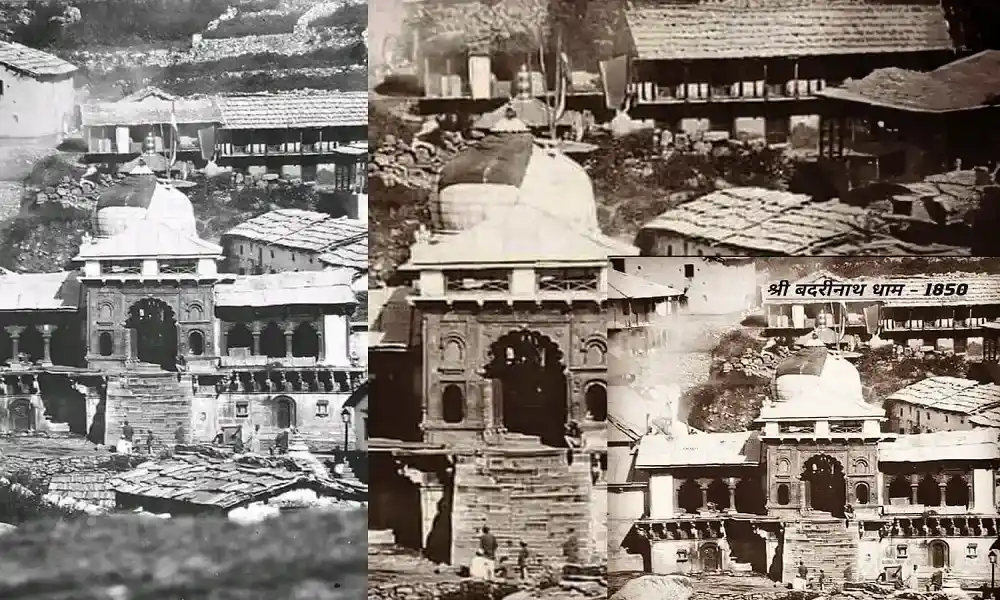Badrinath Dham historical significance can be dated back to the 7th or 8th century during the time of Adi Shankaracharya who is said to be the creator and the person behind the establishment of Badrinath Dham. After re-establishing the temple shrine he also set up his own people there to make the temple in a working condition where the priests of the temple are Nambudiris. He did so in an attempt to revive the apparently dying Hindu beliefs and traditions.
 Historical accounts and the unique temple structure and faced signifies to some that this temple was initially a Buddhist monastery. During the 8th century Adi Shankara along with the help of the king of Garhwal got rid of all the Buddhist population here and re-established the monastery as temple shrine for pilgrimage purposes. By the 16th century the idol of Lord Badri was moved from its initial position near the Tapt Kund to the current temple by the king of Garhwal.
Historical accounts and the unique temple structure and faced signifies to some that this temple was initially a Buddhist monastery. During the 8th century Adi Shankara along with the help of the king of Garhwal got rid of all the Buddhist population here and re-established the monastery as temple shrine for pilgrimage purposes. By the 16th century the idol of Lord Badri was moved from its initial position near the Tapt Kund to the current temple by the king of Garhwal.
Related Legends
The legend of Badrinath goes back to the time when the gods used to walk the earth. Once due to some reasons Lord Badri was sitting in a peaceful meditation and was completely unaware of the surrounding harsh weather conditions. In order to save his beloved his consort goddess Lakshmi decided to turn herself into a jujube or Badri tree and provide protection from the worsening weather conditions. Pleased with his consort’s devotion Lord Vishnu named the entire region after her, and to mark this, the entire region was initially covered entirely in jujube or Badri trees. The statue of Lord Badri inside the temple shrine is in the form of a sitting position.
Another legend which is mentioned in the holy book of Vishnu Puran narrates about how Badrinath originated. As per the ancient accounts the two Lords Nar and Narayan, were looking for an ideal place to perform their penance and spread the word of religion. They finally came across the ideal destination of Badrinath and decided to set up their hermitage there after establishing the Panch Badri sites.
Literary Mentions
This holy pilgrimage temple’s mention can be found in various holy Hindu books of Bhagwat Puran, Skanda Purana and Mahabharata. As per the Bhagwat Puran – in Badrika Ashram, Lord Vishnu has been undergoing a great penance since time immemorial for the welfare of all the living beings. According to Skanda Purana – there are several sacred shrines in heaven, earth and hell, but there is no shrine like Badrinath. The other areas surrounding Badrinath Dham has also found its mention in various ancient holy Hindu books like Padma Puran, where Badrinath is mentioned as the one of the spiritual treasures.
Source of River Alaknanda
Lining the holy temple of Badrinath is the river of Alaknanda whose origin point can be traced back Satopanth Glacier and the Bhagirathi Kharak Glacier. The holy river of Alaknanda is 1 out of the 2 head streams of the holy river of Ganga with an overall length of Alaknanda being 190 kms where it is said to cover a basin area of whopping 10,882 sq. km. Alaknanda river goes on to merge with Mandakini river to form the holy river of Ganga. As per mythology goddess Ganga had descended from the heaven to earth at The Dham of Gangotri. While descending from heaven the river of Alaknanda had split from the celestial Ganga. The river gushes down in full force and marks the region surrounding it to be extremely sacred and pious.
The Significance of Badrinath Dham in Hinduism
Due to its ancient relevance and having found its mention in various holy Hindu scriptures, Badrinath Dham is considered to be extremely important and one of the most significant pilgrimage destination for every avid Vaishnavite. It is believed that ever since the conception of humans and from even before that Lord Vishnu is said to have been living inside the shrine of Badrinath and performing deep penance and will also continue to do so till time immemorium. This Char Dham site is incredibly important for every devout Hindu and should definitely be visited at least once in lifetime to experience its unparalleled and deep spirituality.



 Call
Call WhatsApp
WhatsApp Enquiry
Enquiry